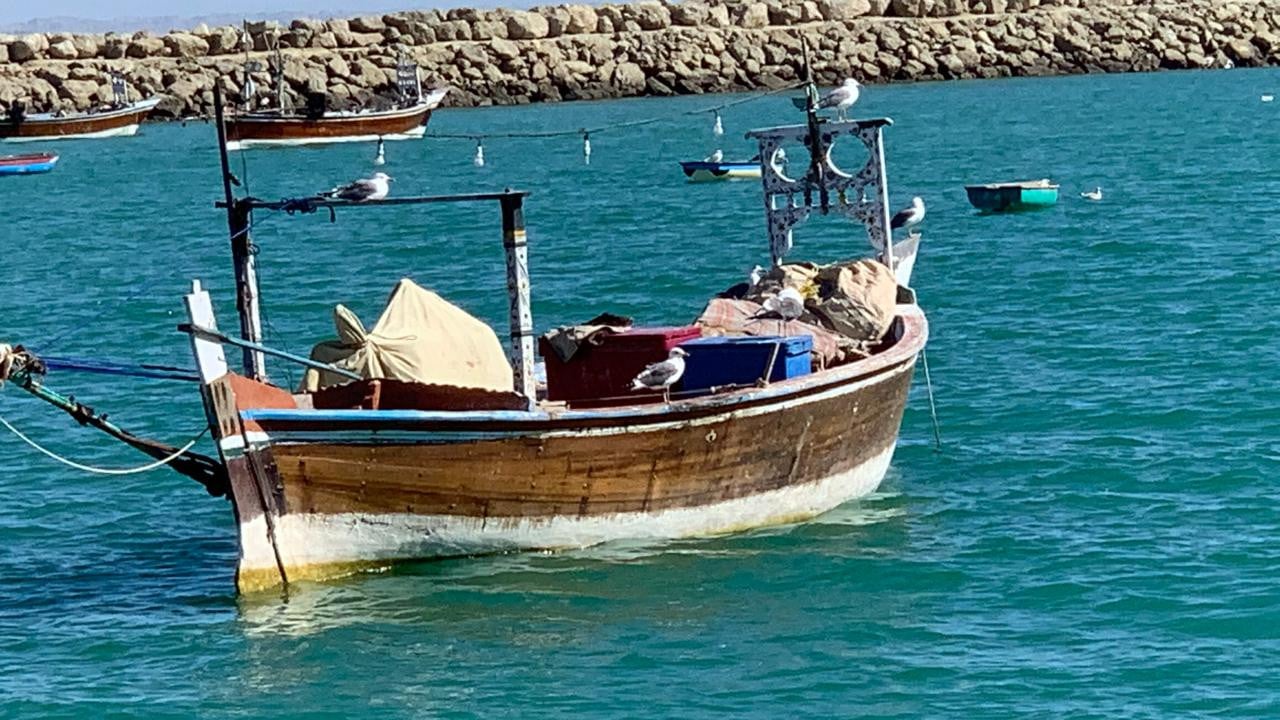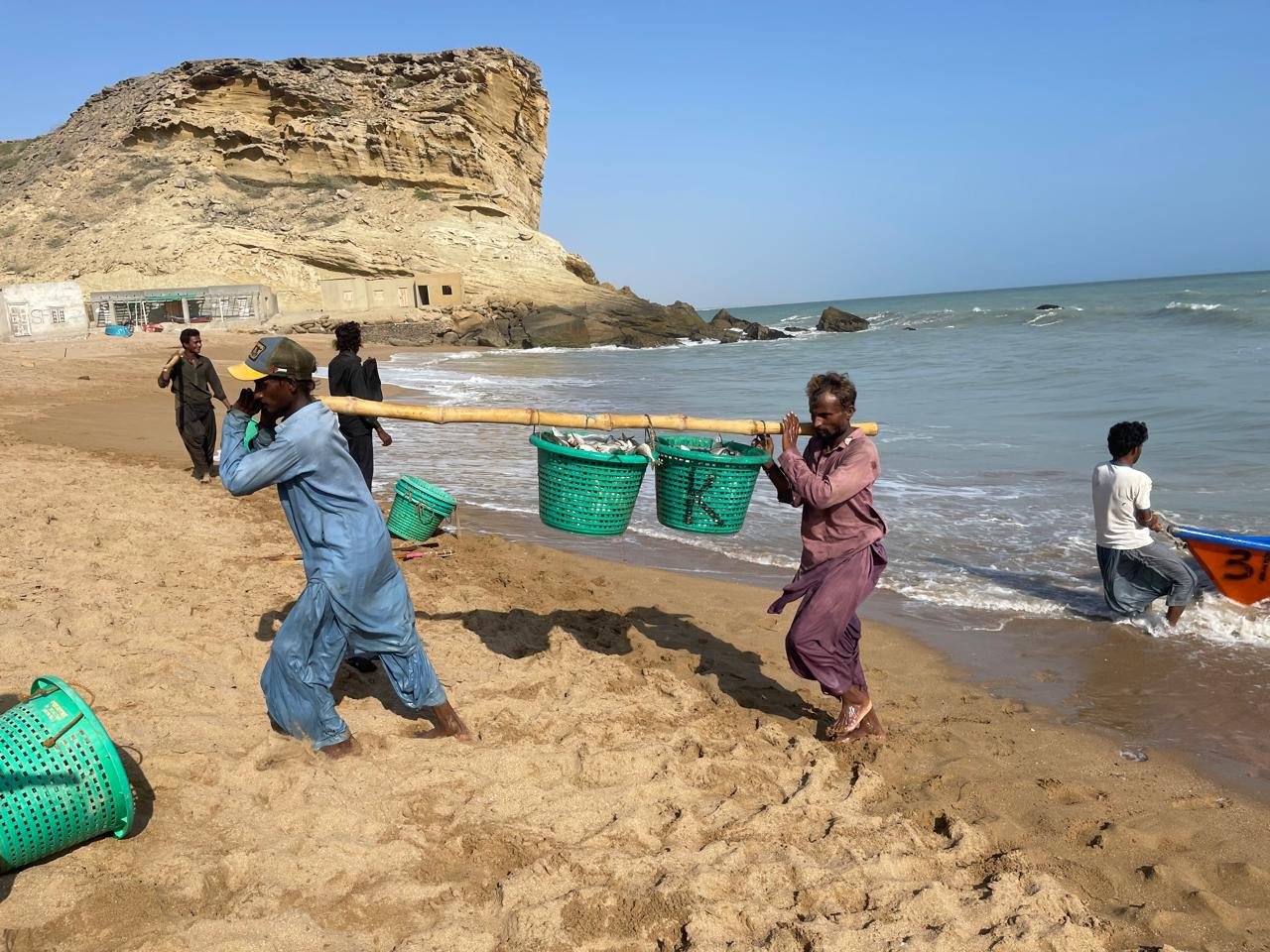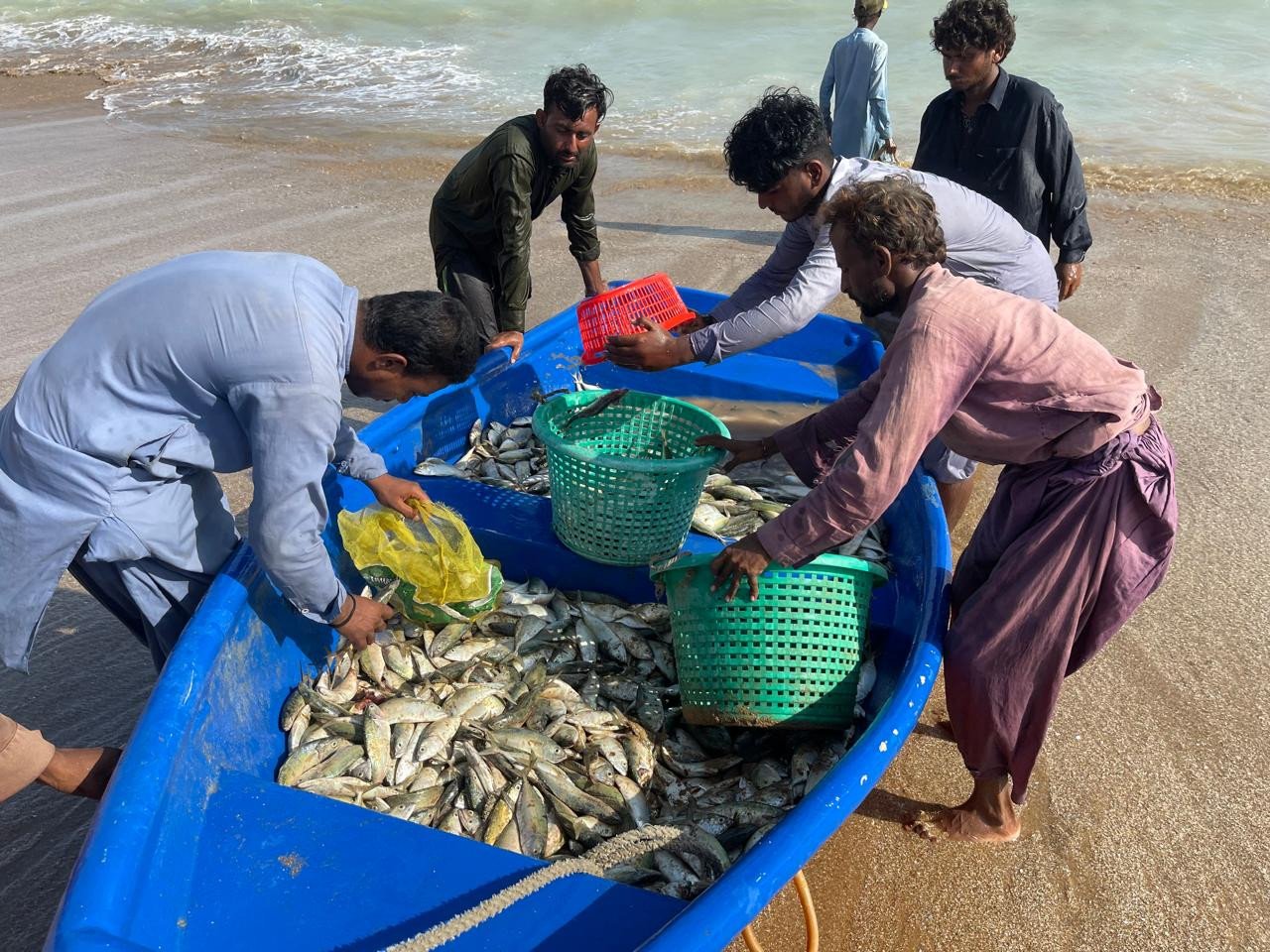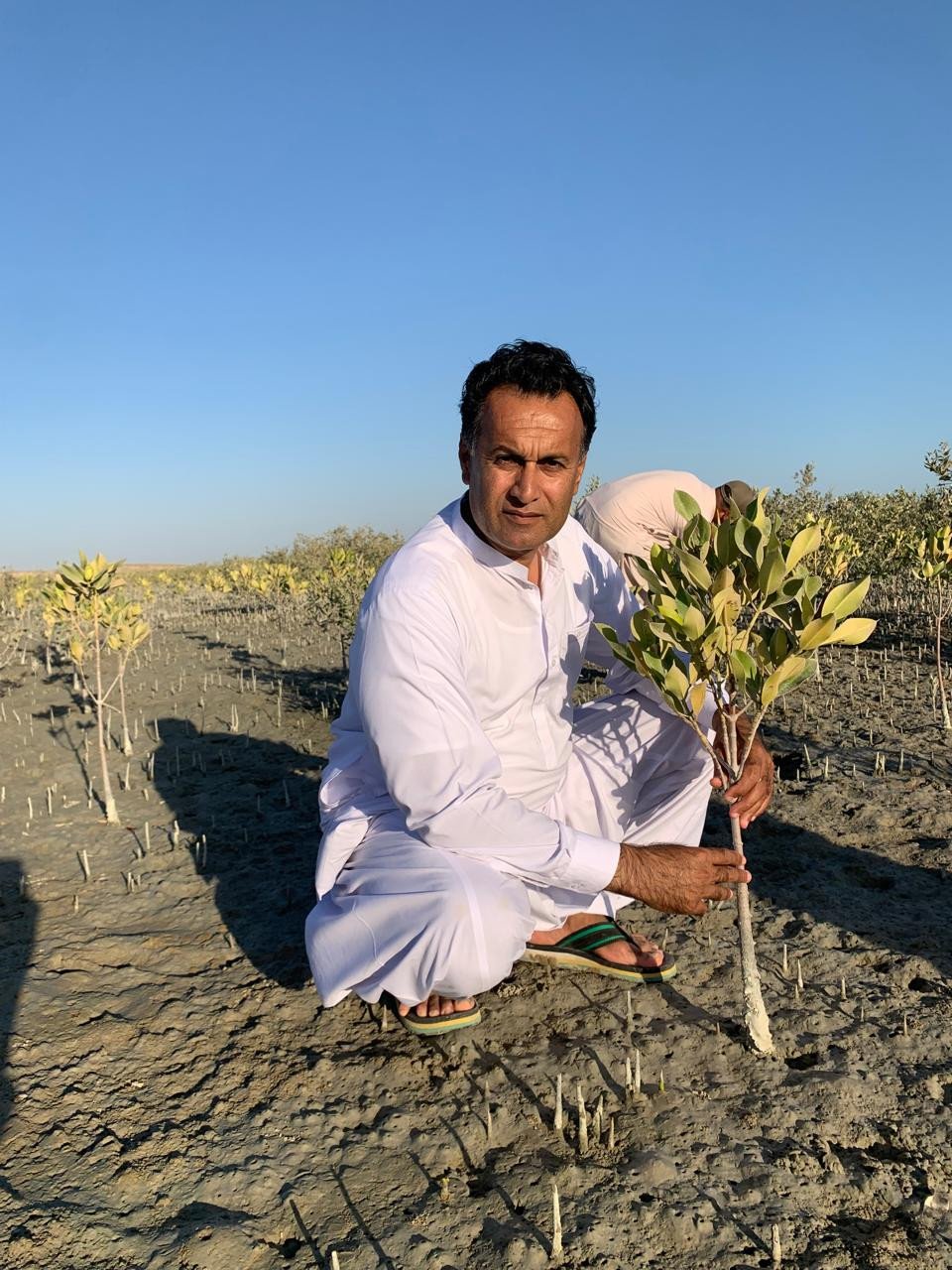The Balochistan coast, stretching over 770 kilometres along the northern Arabian Sea, is one of Pakistan’s most ecologically valuable and economically significant regions, contributing more than 10 billion rupees annually through its fish catch. Home to over 300 commercially important fish species and countless other marine organisms, it supports the livelihoods of thousands of small-scale fishermen and their families. However, this vital coastal ecosystem is undergoing profound changes due to climate change, putting the sustainability of its fisheries and dependent communities at serious risk.
Scientific studies reveal that the Arabian Sea is warming more rapidly than many other regions of the global ocean. Data from the Indian National Centre for Ocean Information Services (INCOIS) and the Pakistan Meteorological Department indicate that average sea surface temperatures in the northern Arabian Sea have risen by approximately 0.7°C since the 1980s. Projections suggest these temperatures could increase by 1.5°C to 2.0°C by 2100 under high-emission scenarios. This warming has serious implications for marine life.
Most fish species are ectothermic, meaning their body temperature is influenced by the surrounding waters. Even slight increases in ocean temperature can accelerate fish metabolism, affecting growth rates, reproductive cycles, and migratory behaviour. However, higher metabolic rates also mean increased demand for oxygen and food resources that are becoming scarcer in warming waters.

Species such as yellowfin, skipjack tuna, and other commercial pelagic fishes, which were once abundant in Pakistan’s offshore waters, are now shifting their migratory routes further south and east to cooler subtropical zones. These trends, observed through satellite tagging and regional catch data from the Indian Ocean Tuna Commission (IOTC), are making it increasingly difficult for Balochistan’s small-scale fishermen to access high-value fish. Relying on traditional wooden boats and lacking advanced navigation systems, these fishermen are facing longer, more dangerous trips and suffering post-harvest losses estimated between 40 to 60 percent.
In addition to rising temperatures, ocean acidification is emerging as a significant threat. As atmospheric carbon dioxide increases, more CO₂ is absorbed by the ocean, forming carbonic acid and lowering seawater pH. The Arabian Sea, due to its semi-enclosed nature and high carbon input from rivers, is especially vulnerable. Lower pH levels reduce the availability of calcium carbonate, essential for shell and skeleton formation in species such as mollusks, crustaceans, and corals.

Coral reefs near Gwadar, Astola Island, and Churna Island — already under pressure from sedimentation, bleaching, and destructive fishing practices — are exhibiting more frequent bleaching events. Bleaching occurs when corals, stressed by high temperatures, expel the symbiotic algae that provide them with nutrients and color. Without these algae, corals become white and highly susceptible to disease and death. The degradation of coral reefs represents more than an ecological loss; it undermines critical nursery and feeding grounds for numerous fish species, leading to declines in biodiversity and fish productivity, and affecting food security and local economies.
Other vital habitats such as mangrove forests and mudflats are also deteriorating under climate pressure. Mangroves, which occur in scattered patches along the Balochistan coast, protect shorelines from storm surges and serve as breeding grounds for juvenile fish and shrimp. These ecosystems are shrinking due to sea level rise, increased salinity, and decreased freshwater inflows. According to the Pakistan Wetlands Programme, the country has already lost more than 15 percent of its mangrove cover in the past two decades, with further losses anticipated. Mudflats, sensitive habitats that support marine and avian fauna, are also declining due to coastal erosion. Recent data shows a 10 to 20 percent loss of mudflat areas along major coastal settlements in Balochistan. This not only disrupts food chains but also reduces biodiversity and feeding grounds for migratory birds.

These environmental changes are compounded by shifts in atmospheric patterns. Variations in monsoon timing and intensity, more frequent cyclones, and erratic rainfall are disrupting fishing schedules and damaging coastal infrastructure. Cyclones Yemyin in 2007 and Phet in 2010, both of which struck the Makran coast, forced the evacuation of fishing communities and caused severe damage to boats, nets, and cold storage facilities.
Another consequence of climate change is the weakening of seasonal upwelling systems. The southwest monsoon drives nutrient-rich waters to the surface along the Balochistan coast, supporting plankton blooms that are essential for fish populations. However, satellite data indicate that these upwelling events are becoming less reliable due to changing wind patterns. In years of weak upwelling, plankton productivity falls, resulting in lower fish larvae recruitment and declining catches. Measurements of chlorophyll-a, a key indicator of phytoplankton density, from NASA’s MODIS-Aqua satellite, show a significant decline in Pakistani waters during key seasonal periods. As the foundation of the marine food web weakens, the entire ecosystem becomes more fragile and less resilient to shocks.
These ecological disruptions are having serious socio-economic consequences. Fisheries are a cornerstone of the coastal economy in Balochistan, where over 80 percent of the population in some districts depends directly or indirectly on fishing. Declining fish stocks are reducing household incomes, increasing debt, and forcing many fishermen to seek alternative and often precarious livelihoods. Women, who are central to fish drying, processing, and marketing, are especially affected. With fewer fish available and fewer buyers in the market, their income and bargaining power are diminishing, compounding gender-based vulnerabilities.

To address these challenges, experts recommend an integrated, climate-resilient fisheries management framework. This should involve the diversification of income sources and the promotion of sustainable aquaculture. One promising approach is the cultivation of temperature- and salinity-tolerant species such as sea bass and grouper in offshore floating cage systems, an approach already successfully implemented in Southeast Asia. Similarly, investment in seaweed farming and the cultivation of bivalves such as oysters and mussels can enhance water quality and generate high economic returns. New technologies — including satellite remote sensing, genetic tagging, and artificial intelligence can support better tracking of fish stocks, predict migration patterns, and monitor ecosystem health. When combined with the traditional ecological knowledge held by local fishing communities, these tools can form the basis of adaptive, co-managed fisheries systems.
Nature-based solutions are also crucial. The restoration of mangroves, coral reef rehabilitation through transplantation, and the stabilization of coastal dunes with native vegetation can protect shorelines, improve nursery habitats, and sequester carbon, offering both ecological and economic benefits. However, such initiatives require strong institutional support and dedicated climate financing. Community-based adaptation projects, training programs on safe and sustainable fishing practices, and early warning systems for storms and high tides all need sustained investment. Strengthening fisheries cooperatives is essential to empower local communities to engage in policymaking and advocate for their rights.
The impacts of climate change on Balochistan’s coast are not future threats, they are present realities. Marine ecosystems are transforming, fish populations are declining, and coastal communities are being pushed to the edge. Yet with informed planning, inclusive governance, and long-term investment in science and nature, it is still possible to secure a resilient and sustainable future for Pakistan’s fisheries and the people who rely on them.
Abdul Rahim is a marine ecologist and PhD scholar
All facts and information are the sole responsibility of the author
